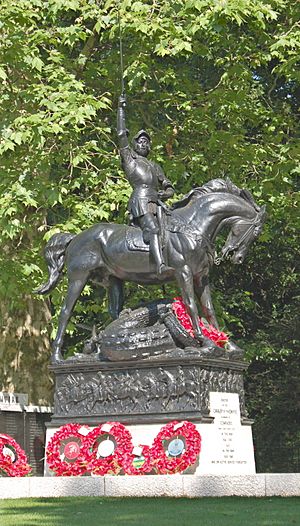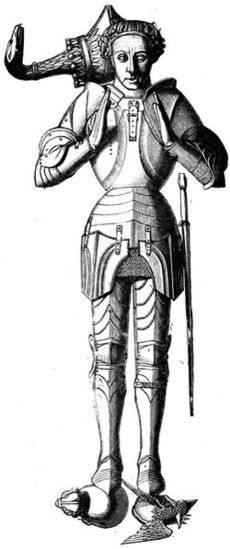Cavalry of the Empire Memorial facts for kids
The Cavalry of the Empire Memorial, often called the Cavalry Memorial, is a special monument in Hyde Park, London. It was built to remember the brave cavalry soldiers who fought in the First and Second World Wars. Cavalry means soldiers who fight on horseback. This memorial is very important. It became a protected building in 1987 and was given an even higher protection status in 2014.
Contents
Why Was the Memorial Built?
After the First World War ended, people wanted a way to remember the cavalry soldiers. In 1920, a group was formed to plan a memorial in London. Many cavalrymen had died or were hurt during the war. For example, almost 4,500 cavalry soldiers were killed on the Western Front, which was a major battle area. Another 15,000 were wounded.
People thought about different places for the memorial. They looked at areas like The Mall or Horse Guards Parade. But in the end, they chose a spot in Hyde Park. This location was near Stanhope Gate.
Who Designed the Memorial?
A famous architect named John James Burnet was chosen to design the memorial. He worked with Thomas Smith Tait. The main statue was created by Adrian Jones. Jones was a sculptor who had also been a veterinary officer in the British Army. He had served in several military trips in the late 1800s.
What Does the Memorial Look Like?
The main part of the memorial is a large bronze statue. It shows St George, a famous knight, riding a horse. St George is shown in shining armour with his sword raised high. His horse is standing over a defeated dragon. The statue is a bit larger than a real person.
The artist, Adrian Jones, got some ideas for St George's armour from an old tomb statue of a knight from 1454. The horse's design was inspired by an old drawing by a famous artist named Albrecht Dürer.
The statue itself was made from guns that the cavalry captured during the First World War. It stands on a stone base. On this base, there is an important message carved into the stone.
What Does the Inscription Say?
The message on the memorial was first put there after the First World War. Later, after the Second World War, more words were added. It now says:
"ERECTED // BY THE // CAVALRY OF THE EMPIRE // IN MEMORY OF // COMRADES // WHO GAVE THEIR LIVES // IN THE WAR // 1914–1919 // ALSO // IN THE WAR // 1939–1945"
This means the memorial was built by the cavalry soldiers from across the British Empire. It remembers their friends who died in both the First World War (1914-1919) and the Second World War (1939-1945).
The Backdrop and Plaques
Behind the statue, there is a stone wall that helps frame the memorial. This wall protects the memorial from the busy road nearby. On this wall, there is a bronze plaque. This plaque lists the names of 150 cavalry units. These units came from many different countries that were part of the British Empire, like Australia, Canada, India, New Zealand, Pakistan, and the UK.
The plaque also lists the names of four important British cavalry officers. These officers became very high-ranking generals, known as Field Marshals. Their names are Haig, French, Allenby, and Robertson.



